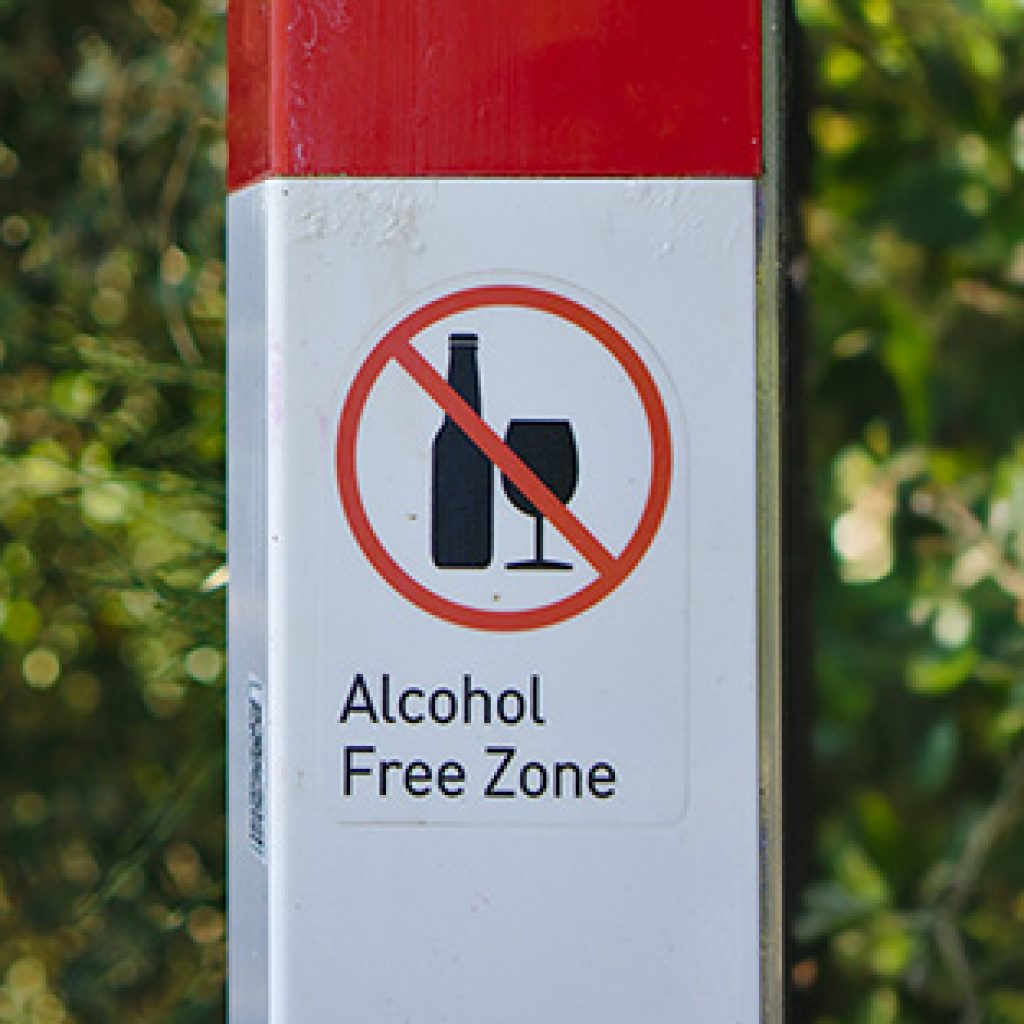According to the Research: What We Know About Teen Dating Violence
According to the Research: What We Know About Teen Dating Violence
Adolescent dating violence, also known as teen relationship abuse or teen dating violence (TDV), is all too common in the United States, with 33 percent of teens reporting some form of abuse and 10 to 12 percent of teens reporting physical abuse (Offenhauyer & Buchalter, 2011). However, while rates and effects of adult intimate-partner violence and marital abuse have resulted in concern in the public health sector and responses in policies, programs and legal interventions in multiple sectors, the same issue among adolescents has been largely overlooked (Offenauyer & Buchalter, 2011). During the last decade there has been increased interest and resulting research about the problem and the new evidence has sparked more awareness among the general public, public health, policymakers, and law enforcement.
Teen Dating Violence: A Definition
Glass and colleagues noted that the lack of a clear and uniform definition of TDV across disciplines has somewhat hampered research in the area of TDV (Glass et al., 2003). The authors, therefore, defined dating violence as “the perpetration or threat of an act of violence by at least one member of an unmarried couple on the other member within the context of dating or courtship (same sex or opposite sex)” citing Sugarman & Hotaling, 1989. The authors also referred to the Centers for Disease Control and Prevention (CDC) intimate partner violence surveillance and uniform definitions document as further delineating the definition. The CDC definition states that there are four categories of abuse: physical violence, sexual violence, threat of physical or sexual violence, and psychological or emotional abuse. The abuse needs to be within the context of a relationship for differentiation from simple violence. There are also issues with the term dating, which contemporary adolescents may not relate to in traditional ways or for whom the term may not have a clear meaning (Glass et al., 2003).
Prevalence of Teen Dating Violence
The overall prevalence of physical and sexual violence in dating relationships varies significantly across studies, ranging from 9% to 46% of both adolescent males and females as victims or perpetrators (Glass et al., 2003; Wincentak & Connolly, 2017). The possible reasons for the variation include lack of uniform definitions for TDV, use of different assessment instruments for TDV, absence of longitudinal data, the variety of populations studied, different ranges of ages for defining adolescence, and a variety of time periods for reporting purposes (i.e., lifetime, current, or for a specific time period) (Glass et al., 2003).
In a meta-analytic review of 101 studies that reported rates of TDV for youth aged 13 to 18 authors found an overall prevalence rate of 20% for physical TDV and 9% for sexual TDV. Results of analyses of both perpetration and victimization showed both rates are higher for African Americans than for White or Hispanic populations (Wincentak & Connolly, 2017). According to the researchers, there is broad variability in reported prevalence rates for TDV which they attributed to reporting of disparate subtypes of abuse, lack of inclusiveness of all types of abuse and all subpopulations, and frequent use of convenience samples in middle and high school youth. Differences in rates reported are also affected by the use of a variety of different time frames and study methodologies.
Impact of Dating Violence On Behavioral Health and Current and Future Intimate Relationships
In a Senate resolution (S. Res.373) that was passed in January 2010, the U.S. Congress established National Teen Dating Violence Awareness and Prevention Month. A companion resolution in March of 2010 offered a call for youth and parents, schools, law enforcement, state, and local officials, and interested groups to observe the awareness month and promote awareness and prevention with appropriate programs and activities for addressing TDV. The rationale for the passage of these resolutions consisted of disturbing trends about TDV and its “deleterious consequences.” Specifically mentioned were “reduced school attendance, increased likelihood of risky sexual behavior, “substance abuse, eating disorders . . . suicide, and adult revictimization” (Offenhauer & Buchalter, 2011). The resolutions stated that communities, including parents, are not sufficiently aware of the issue of TDV and underscored a sense urgency in fighting this lack of awareness and neglect of the issue, particularly with the emergence of digital abuse as a “new frontier” for TDV (Offenhauer & Buchalter, 2011). This abuse often involves online harassment, bullying, or “sexting,” the receiving and sending of sexually explicit or suggestive images or text messages.
The impact of TDV on future intimate relationships was examined in a longitudinal study that looked at the carryover of patterns of physical and sexual assault during adolescence dating into future relationships. A sample of 1,569 university women from two classes completed five surveys during their four years in college. The results supported the idea that women who were physically victimized adolescence were at greater risk for revictimization during their freshman year (with relative risk of 2.96). Women who had experienced violence remained at greater risk for revictimization each subsequent year than those who had not. The risk for co-victimization was significant, with victimization of one type (i.e., either physical or sexual) elevating the risk of victimization of the other type. The patterns of revictimization and co-victimization continued throughout the college years, and adolescent victimization was a better predictor of college victimization than was childhood victimization. Those who experienced childhood victimization were not at increased risk for dating violence in college unless they also experienced dating violence during adolescence (Smith et al., 2003).
Risk Factors and Effectiveness of Prevention Programs
Risk factors may be identified as “attributes or characteristics that are associated with an increased probability of [its] reception and/or expression” (Hotaling & Sugarman, 1990 p.1). These correlates, or predictors can be demographic or community level and can be present in the family, the individual, or be situational (Offenhauer & Buchalter, 2011). Identification of risk factors for perpetration or victimization can result in more effective prevention programming that reduce factors that correlate with or predict TDV. The research to date provides enough evidence for designing effective prevention programs to raise awareness of the issue and focus on those who are at high risk for perpetration or victimization (O’Keefe, 2005). The following categories have research support them as risk factors and the references are as cited in O’Keefe, 2005):
- Demographic Characteristics – Although TDV can occur at any and all levels of the socio-economic strata (SES), studies have identified higher rates in low SES groups (Makepeace, 1987; Sigelman, Berry, & Wiles, 1984). Some evidence has been found for higher rates of perpetration among African Americans (Makepeace, 1987; O’Keeffe et al., 1986; O’Keefe, 1997).
- Prior Experiences/Exposure to Prior Violence – Early exposure to both dating and marital violence may put youth at higher risk for those patterns of behavior, although more research is needed (DeMaris, 1990; Foo & Margolin, 1995; O’Keefe, 1997)
- Peer Influence – Adolescents with friends in violent relationships is associated with having experiences as both a victim and a perpetrator (Arriaga and Foshee, 2004).
- Personality or Interpersonal Variables – Some research supports low self-esteem, depression, suicidality, and ineffective coping styles with increased risk (O’Keefe, 1997; Howard & Wang, 2003; Bird, et al., 1991.
- Other Problem Behaviors – Use of alcohol and other drugs is strongly associated with increased risk for TDV (Burcky, Reuterman, & Kopsky, 1988; O’Keeffe et al., 1986; O’Keefe, 1997). For females, risky sexual behaviors also is supported by research as a risk factor (Marx, Van Wie, & Gross, 1996).
- Relationship Variables – Research supports that higher rates of relationship conflict and a higher number of dating partners increases risk for TDV for both males and females (Bergman, 1992; O’Keefe, 1997). Females who experience lower rates of relationship satisfaction tend to be victims of TDV according to research (O’Keefe & Treister, 1998).
Research also emphasizes the need for prevention and intervention strategies that are both culturally and developmentally appropriate (Wincentak & Connolly, 2017).
Teen Dating Violence Awareness Month
This February is Teen Dating Violence Awareness Month. In order to support the efforts of parents, teachers, friends, and communities in raising awareness about this important issue and supporting the development of safe, healthy relationships, the website has information about the impact of TDV and many related resources. While all of the resources are listed on the observance website, many are listed below and in the CASAT OnDemand Resources & Downloads page for your convenience.
Do you know of efforts to observe Teen Dating Violence Awareness Month by providers or others in your community? Please share in the comments below!
TDV Resources
The Association of Junior Leagues International, Inc. Teen Dating Violence Awareness Month web page.
Dating Matters – The free, online course is available to educators, school personnel, youth mentors, and others dedicated to improving teen health. Follow a school administrator throughout his day as he highlights what teen dating violence is and how to prevent it through graphic novel scenarios, interactive exercises, and information gathered from leading experts.
Love is Respect – This website has many resources about dating, personal safety, healthy relationships, supporting others, and getting help.
Onelove – One Love teaches youth about healthy relationships.
The National Domestic Violence Hotline provides support, crisis intervention information and referral services in more than 200 languages. – Call 1-800-799-SAFE (7233)
Nevada-Specific Resources:
Nevada Coalition to End Domestic and Sexual Violence (NCEDSV) – The coalition will be hosting two statewide virtual events: one Adult Form and one very special Forum for young people aged 11-21. The flyers for the events may be distributed widely to anyone who may be interested in learning the warning signs of an abusive relationship, how to help someone who is struggling in this type of relationship, how to develop a healthy relationship, and the prevention of teen dating violence.
Nevada Cares – Sexual Assault Awareness – The Nevada CARES [Consent. Awareness. Relationships. Education for Students] project is based at the University of Nevada, Reno’s (UNR) Center for the Application of Substance Abuse Technologies (CASAT). The project focuses on developing and expanding outreach and education on interpersonal violence to students, faculty and staff across the UNR campus.
The Young Adult Forum features a Nevadan, Briana Vallejo, who will be sharing a first-hand account of relationship abuse. Following her presentation My Voice, My Choice (How it started vs. How it’s going.), she will be facilitating a Discussion Forum for young adult attendees to ask questions, share their experiences, and openly discuss any issues relating to relationship abuse.
The Adult Forum will prepare parents, educators, and other adults who care about young people to respond to disclosures of abuse in a supportive way, keep the lines of communication open, and learn about domestic and sexual violence advocacy resources available in your own community.
NCEDSV also has many resources to help promote healthy relationships, raise awareness about the issue and support those who need assistance, regardless of race, age, sexual orientation, religion, or gender. The resources can be found on the NCEDSV Resources page.
References
Basile, K. C., Clayton, H. B., DeGue, S., Gilford, J. W., Vagi, K. J., Suarez, N. A., Zwald, M. L., & Lowry, R. (2020). Interpersonal Violence Victimization Among High School Students – Youth Risk Behavior Survey, United States, 2019. MMWR supplements, 69(1), 28–37. https://doi.org/10.15585/mmwr.su6901a4
Glass, N., Fredland, N., Campbell, J., Yonas, M., Sharps, P., & Kub, J. (2003). Adolescent dating violence: Prevalence, risk factors, health outcomes, and implications for clinical practice. Journal of Obstetric, Gynecologic, and Neonatal Nursing, 32(2), 227-238. doi:10.1177/0884217503252033
Offenhauer, P., & Buchalter, A. (2011). Teen dating violence: A literature review and annotated bibliography. Library of Congress.
O’Keefe, M. (2005). Teen dating violence: A review of risk factors and prevention efforts. National Electronic Network on violence against women, 1, 1-5.
Smith, Paige Hall, Jacquelyn W. White, and Lindsay J. Holland. “A Longitudinal Perspective on Dating Violence Among Adolescent and College-Age Women.” American Journal of Public Health 93, no. 7 (July 2003): 1104–1109. http://www.ncbi.nlm.nih.gov/pmc/ articles/PMC1447917/.
S.Res 373, 111th Cong. (2010); H. Res 1081, 111th Cong. (2010), http://thomas.loc.gov/cgibin/query/ D?c111:2:./temp/~c111BhpNXK.
Vagi, K. J., Rothman, E. F., Latzman, N. E., Tharp, A. T., Hall, D. M., & Breiding, M. J. (2013). Beyond correlates: A review of risk and protective factors for adolescent dating violence perpetration. Journal of youth and adolescence, 42(4), 633-649.
Wincentak, K., Connolly, J., & Card, N. (2017). Teen dating violence: A meta-analytic review of prevalence rates. Psychology of Violence, 7(2), 224–241. https://doi.org/10.1037/a0040194
Blog Post Tags:
Related Blog Posts
Related Learning Labs
Related Resources
.
- Buscar Tratamiento de Calidad para Trastornos de uso de Sustancia (Finding Quality Treatment for Substance Use Disorders Spanish Version)
- Finding Quality Treatment for Substance Use Disorders
- Focus On Prevention: Strategies and Programs to Prevent Substance Use
- Monthly Variation in Substance Use Initiation Among Full-Time College Students
- The National Survey on Drug Use and Health (NSDUH) Report: Monthly Variation in Substance Use Initiation Among Adolescents








